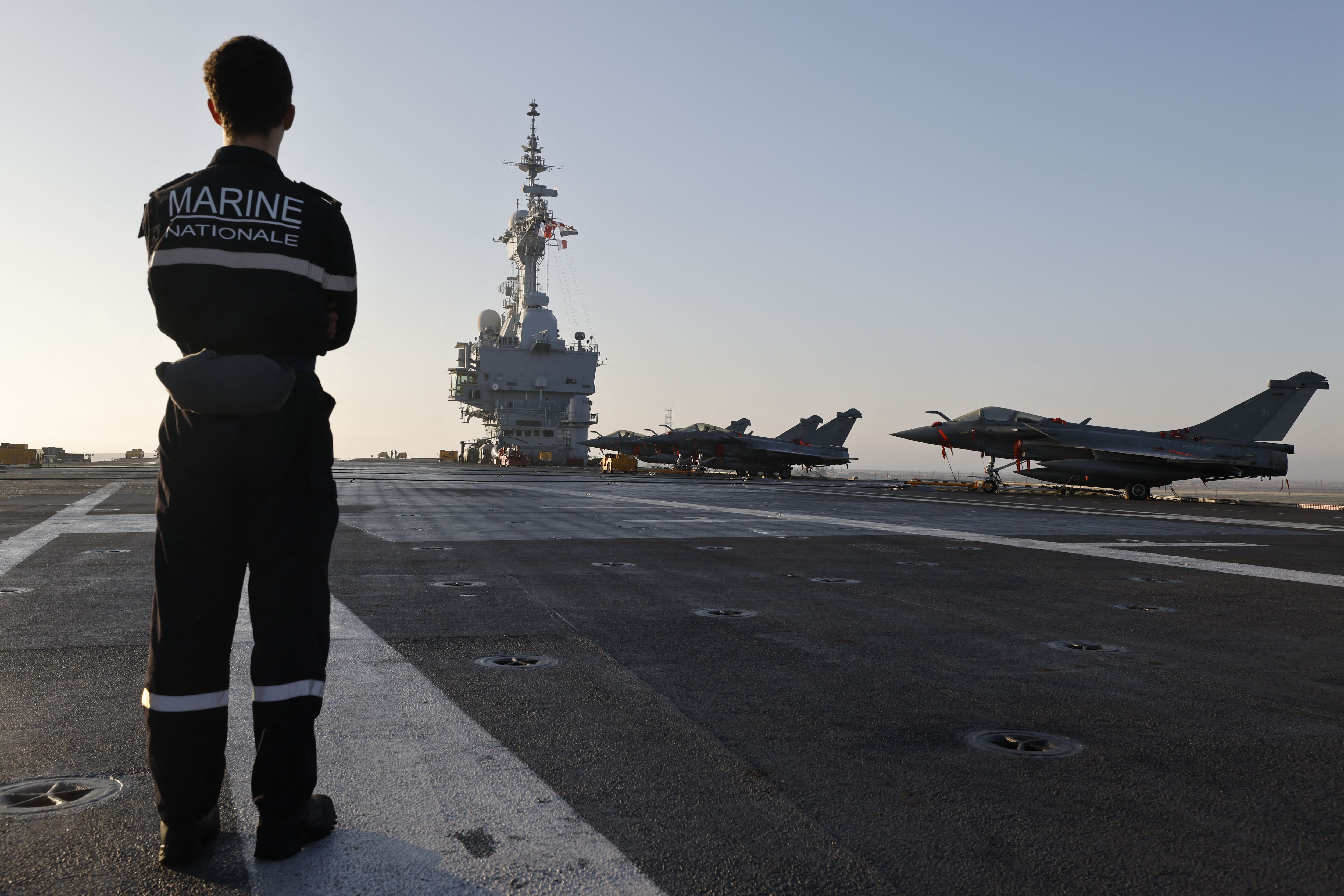PARIS — The pace of change in maritime warfare requires Western navies to innovate faster and work more intimately with industrial partners to defeat evolving threats, the heads of the French and U.K. navies said.
Navies can no longer count on ships staying relevant over their 40-year lifespan, and weapon systems will change “dramatically” over such a period, French Navy Chief of Staff Adm. Nicolas Vaujour said at the Euronaval industry conference outside Paris on Monday. Weapon systems may need to be adapted as frequently as every year, requiring ship architecture that allows for systems to be plugged in and changed when needed, Vaujour said.
“We have to build adaptable by design,” Vaujour said. “You must build the ship to be adaptable during 40 years, which is quite tricky.”
Navies from the U.S., China and Russia, as well as France and the U.K., have been testing maritime weaponry ranging from swarming drones and lasers to hypersonic anti-ship missiles and rail guns in the past three years, while progress in artificial intelligence has allowed for increasingly autonomous unmanned vehicles.
RELATED

Generational technology change is happening much faster than the time it takes to construct a ship, meaning navies need to implement new capabilities “far quicker than the speed at which we can build a hull,” according to Adm. Sir Ben Key, First Sea Lord and Chief of Naval Staff of the U.K.’s Royal Navy.
“So you have to detach the operational capability from the platform that’s going to take you there,” Key said. “That is quite a mindset change for us.”
Ukraine has been using missiles, unmanned aerial vehicles and seagoing drones to deny Russia access to much of the Black Sea, despite having little navy to speak of. In the Red Sea, Yemen’s Houthi rebels have targeted commercial vessels with drones and ballistic missiles, prompting freight traffic from Asia to Europe to reroute around Africa.
“If you stay with your old doctrine, you will be dead very rapidly,” Vaujour said. “What we saw in the Red Sea is that we have to adapt very quickly our system.”
The response of the French and British navies to the Houthi threat showed how learning accelerated when the urgency was understood, according to Key.
Both navies worked with MBDA to improve missile performance and software, and “learning time had to be dramatically reduced, because this was no longer a science project being done in the sea off Toulon or in the waters off Plymouth,” Key said.
The lesson was that forces need to be “much sharper” about focusing on the factors that really matter, rather than seeking a perfect solution that will be late, according to the British admiral. That will be a challenge, “because we’ve been brought up in the pursuit of perfection, and actually, we haven’t got time for that,” Key said.
Maritime warfare is experiencing a moment similar to the end of the Age of Sail, when engineers and deep-gunnery specialists became more important on board than the master of sail, according to Key. Going forward, key crew on board will be those able to tap into digital opportunities and needs, the British navy chief said.
“We’re living through kind of one of those moments of really significant change in the way we have to think about the application of power at sea, or maritime power,” Key said.
For the French, one lesson from the Red Sea was that facing a constant threat is “really hard” on crews, and the navy probably needs more people on board, according to Vaujour. “We make the bets to reduce the crew, and I came back from that.”
Systems will be used in ways outside of their design, and crews need “a lot of innovation bias” to come up with untested solutions, according to Vaujour. He cited the use by the French frigate Alsace of a helicopter to shoot down a Houthi drone in March, a scenario that had been tested just weeks earlier in Toulon.
Speeding up innovation will require closer cooperation with industry, according to both admirals. The French navy in coming weeks will start to bring industry engineers on board, particularly in the field of artificial intelligence, to help industrial partners understand the onboard needs and to accelerate innovation, Vaujour said. The admiral is also considering having a vessel dedicated for cutting-edge applications.
As the pace of equipment development accelerates, the U.K. navy is looking to its industrial partners to provide training, as well as for more risk sharing between both sides, Key said.
“What we’re seeing in the Black Sea, what we’re seeing in the southern Red Sea, the speed of development that we’re seeing by some of the navies further afield, requires us to have a much more agile mindset about the way we develop our capabilities,” Key said.
Rudy Ruitenberg is a Europe correspondent for Defense News. He started his career at Bloomberg News and has experience reporting on technology, commodity markets and politics.








